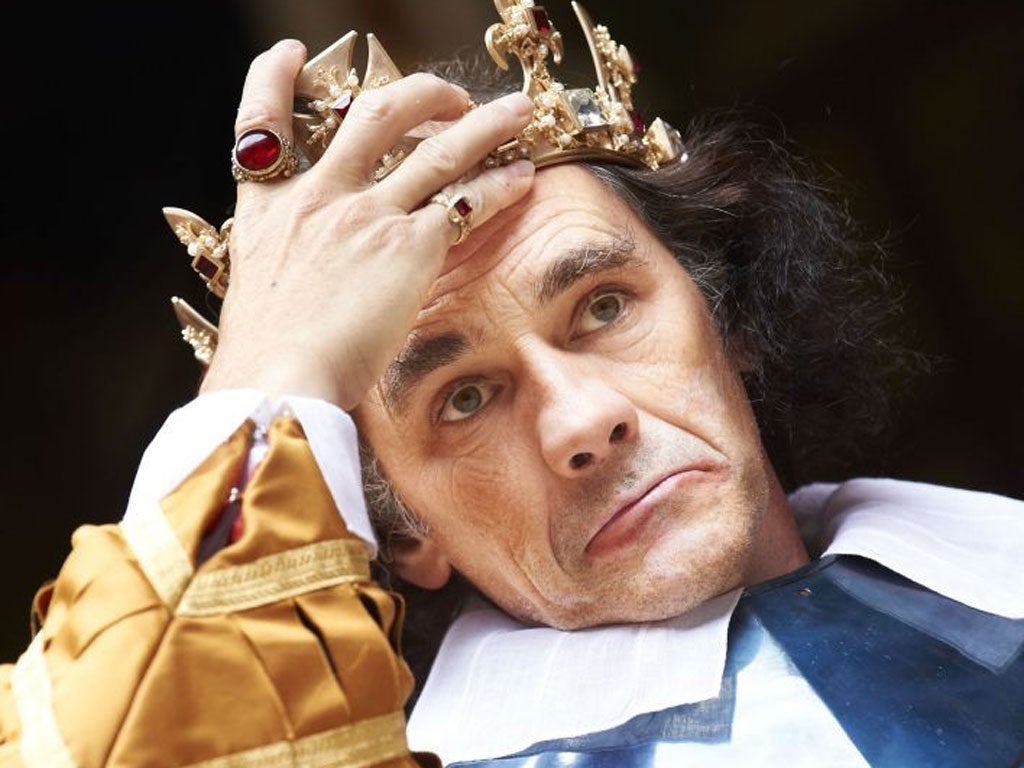Boning up is the best way to learn history
Was Richard III a graceful king or malevolent hunchback? As archaeologists dig up what might be his remains, we are moving closer to the truth.

The Richard III Society is not about to shut up shop soon. But the society, which exists to defend the medieval king from what it sees as Tudor propaganda against him, may soon be about to have a firm answer to one of its disputed points. Was Richard the grotesque hunchback of Shakespeare? Or was his deformity a much milder one? Was he – some of Richard’s proponents have suggested – disabled at all?
The site of a medieval church in Leicester, now a car park, has been dug up in search of Richard’s remains. In the past few days, a skeleton has been discovered which shows signs of violent death, exactly as reported by contemporary chroniclers. Interestingly, there are clear indications of scoliosis of the spine. There will be DNA tests, using some of Richard’s direct descendants. In the meantime, it does look rather as if the king was deformed in exactly the way the Tudor propagandists described.
Whether or not he murdered his nephews in the Tower, archaeologists cannot answer.
When a myth is confirmed, it can have a disconcerting effect. For years, anybody who thought about it took it for granted that Shakespeare’s version was cooked up to please his Tudor masters. The famous, gloriously grotesque version – it is, almost invariably, one of his funniest plays – is countered, probably, by the measured account of Josephine Tey’s classic armchair detective novel The Daughter of Time. Richard didn’t kill his nephews – that was, people will tell you, Henry VII. He wasn’t the thug and bully of the drama, but the thoughtful reformer his contemporaries praised. And the hunchback was much exaggerated, his proponents will say, if indeed he was hunchbacked at all. At this point, the evidence of the Leicester skeleton surfaces. If it doesn’t undermine the whole case, it certainly starts to suggest that the Shakespearean version is not complete fantasy: there may be some truth to it.
Gossip and propaganda about historical figures, particularly royalty, can be so extravagant that it comes as a surprise when it is proved true. Of course, most of the disputed accounts of royalty turn out to be less securely based than, apparently, Richard’s hunchback. The 19th-century newspapers were much less respectful towards royalty, surprisingly, than nowadays – when the day-old Prince John died, one newspaper called him a “wretched abortion… a shrivelled piece of skin and bone, grandiloquently entitled ‘prince’, not 24 hours old”.
In this setting, an irreverent attitude towards Queen Victoria and her children produced a glorious array of myths and fantasies. According to these, the Duke of Clarence was Jack the Ripper, or the habitué of homosexual brothels: his brother, the future George V, had a wife and children in Malta; the Queen herself had married her Scots ghillie John Brown; Prince Albert’s real father was a Jewish court chamberlain, and so on. These stories have circulated to the present day, given impetus by Edward VII’s unfortunate habit of burning the personal letters of his family, suggesting that there was more to hide than was really the case.
In the case of Richard III, which do you choose to believe – the Grand Guignol of Shakespeare, indirectly buttering up the Tudors? Or the propagandists and authors of court panegyrics of Richard’s own time? In this question, the point about whether he was, in fact, hunchbacked plays an uncomfortable part. Shakespeare had wide human sympathies, but a physical deformity still tended to reinforce villainy in his imagination.
The physical facts about a monarch, like Edward I and Henry VIII being well over 6ft tall, are often some of the few unarguable truths about them. What you choose to do with those physical facts places them, once again, in the realm of debate and prejudice. I don’t suppose we will ever get to the truth about any individual king, queen or prince. There has always been too much at stake. Both denigrators and supporters of any given historical personage are in the business of inventing picturesque details.
Only very occasionally does a bone thrust up from a grave, beyond the control of chroniclers, to state the exact and incontrovertible truth. If this is Richard’s skeleton, and can be proved to be, it will be a genuinely rare witness. On the whole, it is better to get your history from graveyards than from playwrights.
So we're back to Woody's 'return to form'
Amusement may be had, in the film world, by simply saying the words “Woody Allen” and “return to form” shortly after each other. Mr Allen has been returning to form for nearly 30 years now – I remember that The Purple Rose of Cairo and Hannah and Her Sisters were acclaimed in exactly this way. Recently, it’s become a ritual. Midnight in Paris was hailed like this. But so were You Will Meet a Tall Dark Stranger, Vicky Cristina Barcelona and even, bravely, Match Point. I had ruled Mr Allen out since the atrocious 1998 Celebrity, but this drip feed of returns to form must have got to me. I went to see his new film, To Rome with Love. It was not a return to form. The term must be one of the most witless of all critical judgements. It must rival “will make you laugh uncontrollably on public transport” and “writing at the peak of his powers” as a guarantee of non-entertainment. Could we please have a moratorium on it, and when Mr Allen in particular next brings out a film, just say honestly what we think of it?

Join our commenting forum
Join thought-provoking conversations, follow other Independent readers and see their replies
Comments